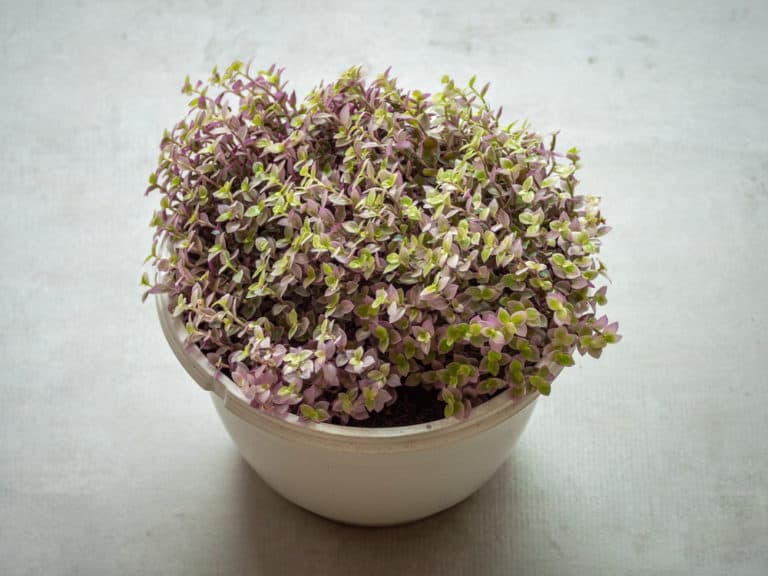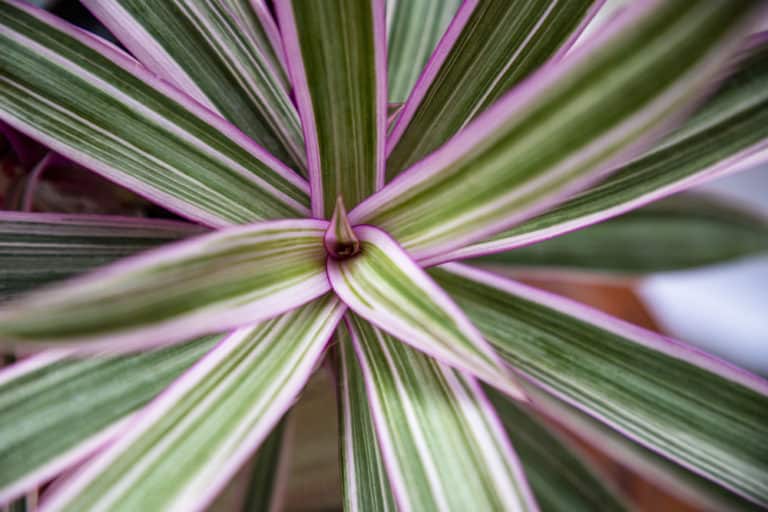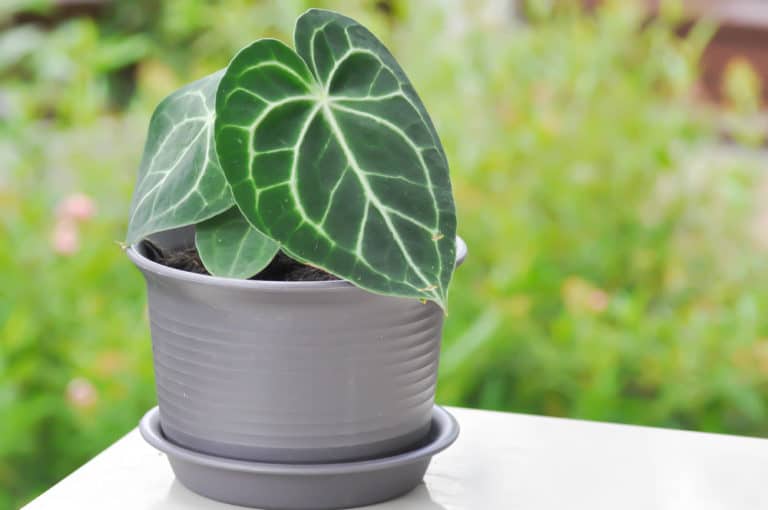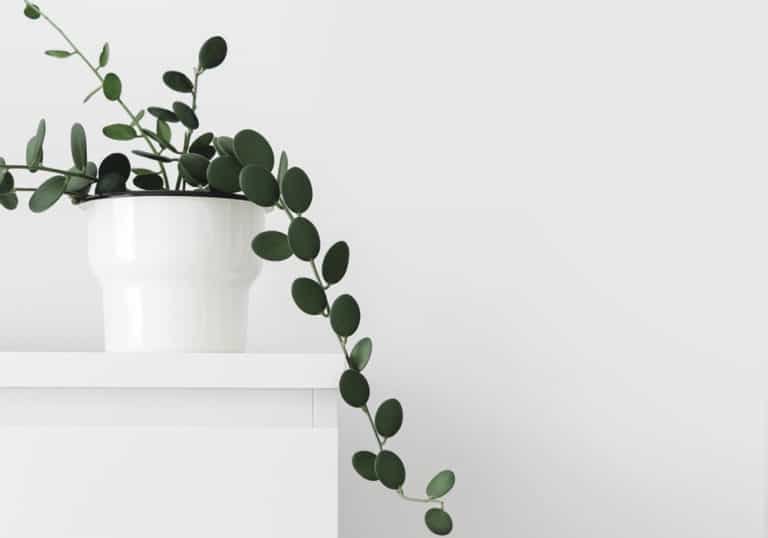Philodendron Selloum ‘Tree Philodendron’ Care Guide (2024)
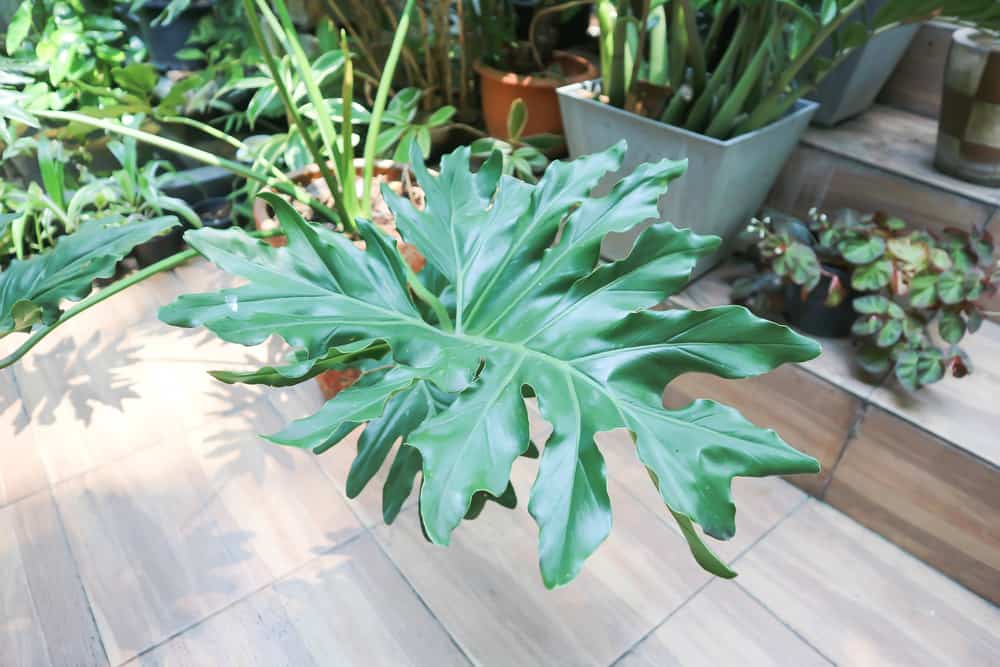
Philodendron selloum is a magnificent member of the araceae family that will naturally dominate anywhere it’s planted.
The Tree Philodendron can be grown outdoors in tropical regions where it will reach an impressive height of 15 feet.
However, it’s also a popular houseplant in temperate zones, although you’re going to need room to let it spread.
| Scientific Name | Philodendron bipinnatifidum |
| Common Name | Philodendron selloum, Tree Philodendron, Lacy Tree |
| Light | Bright indirect sunlight |
| Watering | Weekly, water if the top of the soil is dry |
| Temperature | 65 to 80ºF (18 to 27ºC) |
| Hardiness Zone | 9b, 10a, 10b, 11a, 11b |
| Humidity | 70 to 90% |
| Soil Type | Rich, quick-draining, loamy |
| Soil pH | 5.5 to 7.5 (acidic to neutral) |
| Fertilizing | A balanced feed once a month in spring and summer |
| Repotting | Every 2 years |
| Pruning | Spring or fall |
| Propagation | Root in water or soil |
| Toxicity | Toxic to humans and pets |
| Mature Size | 6 feet as a houseplant |
| Bloom Time | Rarely blooms indoors |
What’s Unique About Philodendron selloum?
The Philodendron selloum plant is native to the tropical rainforests of Brazil, Bolivia, Paraguay and northern Argentina, where it thrives in the shady understory.
Its large, lush foliage is long-lasting and beautiful, with deeply lobed glossy leaves. Wherever it’s used, you’ll instantly get a tropical atmosphere.
Growing Philodendron selloum doesn’t involve a lot of care, making it an ideal choice for people who are away from home frequently.
Philodendron selloum plants also are known to be effective at filtering contaminants such as formaldehyde from the air. They are not just great-looking, but also are a healthy addition to an indoor environment.
Philodendron selloum Care
Philodendron selloum originates in the tropical rainforests of South America. Good
Philodendron selloum plant care needs to replicate its native environment as much as possible.
While you can’t turn your home or office into a steamy jungle, your Tree Philodendron care should aim for bright, indirect light, warm temperatures, and high humidity.
Light
In its South American rainforest home, Philodendron selloum is accustomed to growing under the shade cast by the towering trees that form the canopy.
Philodendron selloum light requirements are therefore for bright light without being exposed to direct sun. It will do well in a spot with between 10,000 to 20,000 lux.
Tree Philodendron light needs are fairly flexible, however; it can grow in a shadier location fairly well, as long as it gets about 6 hours of indirect light a day.
You should keep it out of the full sun, however. If your only option is a south exposure, diffuse the direct rays with a curtain.
Watering
The goal of Philodendron selloum watering is to maintain consistently moist soil without ever being saturated.
Water Tree Philodendron when the surface of the soil has dried out. Gently pour water onto the soil several times until the excess starts to come out at the bottom. Always empty the saucer so that the pot never sits in water.
Even if you’re going to be away for a week or so, you can meet your Philodendron selloum’s
watering needs.
Fill a jar with distilled or rain water and place it above the level of the soil. Put one end of a soft cotton rope in the water, and bury the other in the soil. As the soil dries out, water will slowly wick into the pot.
Temperature
The ideal temperature for Tree Philodendron is 65 to 80ºF (18 to 27ºC). This is a tropical plant and it needs heat to thrive.
Luckily, you should already have your home or office set at the lower end of the Philodendron selloum temperature range.
Probably a greater concern is in an air conditioned space, as Philodendron selloum has limited
temperature tolerance below 55 ºF (12ºC). Keep it out of drafts or the direct line of air conditioned air, or you may see its gorgeous leaves dropping off.
Philodendron selloum has no frost hardiness at all. Exposure to freezing temperatures will kill it.
Humidity
This rainforest native loves high humidity, and will thrive at a humidity level as high as 70 to 90%.
However, even if you can’t achieve the ideal humidity for Tree Philodendron, you should be able to keep it happy at a level around 40%.
Keep an eye on the leaves, though, and if they start to curl under, that’s a sign that they need some help.
You can meet Philodendron selloum humidity requirements by misting the leaves every day. Be sure to use rainwater or distilled water.
If that gets to be too much work, invest in a small humidifier that will keep the air around your Philodendron selloum consistently humid.
Soil
Philodendron selloum soil has to be able to do two things that might seem at odds with each other.
The soil for Tree Philodendron needs to be consistently moist, but at the same time well-draining. You want the dampness of a wrung-out sponge, not one that is dripping wet.
The range of pH level for Tree Philodendron is 5.5 to 7.5, or acidic to neutral.
You don’t need to use a complicated soil mix to grow your Philodendron selloum. It’s actually quite acceptable to plant it in nothing but peat moss.
Peat moss will absorb sufficient water while still draining well, and keep the pH towards the acid end of its range.
Fertilizer
For the biggest, healthiest leaves, you will need to use a fertilizer for Tree Philodendron.
The best fertilizer ratio for your Philodendron selloum is a standard 20-20-20.
Probably the easiest Philodendron selloum fertilizer option is incorporating slow-release granules into the soil 3 times a year.
Otherwise, your best bet is a liquid houseplant fertilizer. Dilute it to half the recommended strength and apply to the soil surface once a month in spring and summer. Cut back to every 2 months in fall and winter.
Always do this right after you’ve watered the soil. Otherwise, the nutrients might just trickle down and out without being absorbed.
Potting & Repotting
Philodendron selloum repotting should be done every 18 months to 2 years, as the roots start to fill the pot.
You will know when it’s time for repotting Tree Philodendron when you see the roots snaking out of the drainage holes at the bottom.
While you will want to use a bigger pot size, don’t get carried away. Your Philodendron selloum will actually get stressed in too large a pot. Only increase the pot diameter by at most 2 inches.
Choose a new pot that’s made of unglazed clay, which helps keep the soil from getting waterlogged, as moisture will transpire out through the sides.
Always use fresh potting soil when repotting.
Pruning
Philodendron selloum pruning should be done either in spring at the beginning of its growing season, or in fall when it is about to enter its dormant period.
As your Philodendron selloum grows in height, the older leaves at the bottom will start to turn yellow. You should trim them off as this occurs, which will expose the trunk.
You may also need to prune your Philodendron selloum to fit in the space you’ve got available, or to create a symmetrical shape.
Some people don’t like the appearance of the aerial roots that develop, and it’s perfectly okay to cut those out.
When cutting Tree Philodendron, use sharp, sterilized scissors or knives, and avoid getting the toxic sap on your skin.
Propagation
Philodendron selloum propagation is not difficult for the home grower, and is an easy way to create new plants for yourself or others.
The easiest way to propagate Tree Philodendron is by rooting stem cuttings in water.
Start by cutting stems with at least 2 leaves, and 2 or 3 nodes. Remove all but the leaves at the tip, and place the stems in water with the nodes under the surface.
Keep the jar in a warm spot out of full sun, and change the water every week.
It may take up to 2 months for roots to grow sufficiently for transplanting.
Also, make sure to check out our in-depth Philodendron splendid plant care guide.
Common Problems of Philodendron selloum
Just like with any houseplant, it is possible that you will have some Philodendron selloum problems.
However, most problems with Tree Philodendron can be prevented by giving it proper growing conditions.
Keep an eye on the leaves of your Philodendron selloum, as they will be your first clue that something is wrong.
Pests
Philodendron selloum pests can be prevented by wiping down both sides of every leaf on your Tree Philodendron once a month.
A damp cloth with a bit of insecticidal soap or neem oil will be an effective repellent against bugs.
Aphids are small green insects on the underside of the leaves.
Spider mites spin sticky webs and leave yellow and white spots on the top of the leaves.
Both can be cleaned off with a strong spray from a handheld shower or sink faucet.
Mealybugs look like puffs of cotton on the underside of leaves. They are easily removed with a cotton ball soaked in rubbing alcohol.
Scale look like little brown bumps on the stems. They can be scraped off before using insecticidal sprays.
Diseases
Most Philodendron selloum diseases are caused by overwatering.This stresses Tree Philodendron and is a fertile breeding ground for fungal and bacterial infections.
Bacterial blight starts with small, wet dark green spots on the leaves. Bacterial leaf spot begins as small black spots, often with a yellow halo.
Immediately remove all affected leaves and dispose of them in the garbage. Avoid getting the leaves wet in future.
Root rot is a fungal disease that can develop when the soil of your Philodendron selloum is too wet. You will see the leaves turning yellow and the stems getting mushy.
Remove the root ball from its pot, and clear off as much soil as possible. Cut off all infected roots, leaves, and stems, and repot your Philodendron selloum in fresh soil.
Growing Problems
Other growing problems aren’t caused by disease, but rather by imperfect growing conditions.
Luckily, you can usually save your sick plant by diagnosing what it isn’t getting, and making changes.
Yellow leaves might indicate that your Philodendron selloum needs more light. Move it to a brighter spot.
If the tips of its leaves are turning brown, you should water more frequently to prevent the soil from drying out.
If the leaves are curling, it needs higher humidity levels.
If the leaves are a paler shade of green, first make sure that your Philodendron selloum is not in the direct sun. If that’s not the issue, you should increase the frequency of fertilizing.
Toxicity of Philodendron selloum
The Tree Philodendron is toxic to humans and most household pets. All parts of the plant contain calcium oxalate crystals, which pierce delicate tissues and can cause serious problems.
Because of its toxicity, you should take precautions when growing this member of the araceae family in a home with children and pets.
For Humans
Philodendron selloum is toxic to humans.
Adults are very unlikely to try eating any of the foliage, but sometimes children may get curious and take a bite.
If your child has ingested some Philodendron selloum, immediately remove as much plant material as you can from both outside and inside their mouth.
If they just have localized pain on their lips and inside their mouth, a popsicle should help alleviate the symptoms.
However, if they have a swollen tongue or difficulty breathing, take them to the emergency room immediately.
Adults are more likely to get some sap on their skin while tending the plant. Rinse it off with soap and water to prevent the development of a rash.
For Pets
Philodendron selloum is toxic to most common household pets, including cats, dogs, and rabbits.
If your pet starts drooling excessively, wheezing, or experiencing vomiting or diarrhea, take it to the veterinarian immediately.
If you want to keep both pets and a Philodendron selloum, you will have to find a way to keep the two apart.
It is not possible to keep in a spot out of reach of pets and children, as this large plant needs to be placed on the floor.
However, you could arrange an attractive barrier such as a trellis to keep the little ones in your home from being able to get at it.
Philodendron selloum Appearance
The Philodendron selloum appearance is nothing short of magnificent.
Its huge, deeply-lobed leaves grow extravagantly, and since they are evergreen, it will stay that way year-round.
A mature plant can reach 6 feet tall and across, creating a jungle all on its own.
While it will probably never flower when grown indoors, those blooms will never be missed.
Foliage
The foliage of Philodendron selloum is spectacular, even on young plants.
Each leaf can grow 3-4 feet long and 18 inches wide. They are deeply lobed, looking as if they’ve been cut into thin strips almost back to the center rib.
They are dark green, with a glossy surface and thick texture. The smaller veins running through the leaves create a fascinating cross-hatch effect, especially when light shines through them
Because Philodendron selloum is an evergreen, individual leaves last for a considerable length of time. You should wipe them down with a damp cloth to remove any dust and dirt from the surface.
Flowering
You would have to be very patient indeed to see your Philodendron selloum flowering. It will take from 15 to 20 years for blooming to occur.
And if you do manage to get flowers on your Philodendron selloum, it will not really be worth the wait. The small flowers are insignificant, and don’t even have a fragrance.
The spathe of a Philodendron selloum flower is pale to dark green, wrapped around a light green to white spadix.
Interestingly, it does not use fragrance to attract pollinators, but rather heat, maintaining temperatures of 110ºF (43ºC) for the first few days after blooming.
Size and Growth
Philodendron selloum is a big plant that will need lots of space. The full size of Philodendron selloum grown as a potted plant can be 6 feet tall and wide.
It has a fairly fast growth rate, but can last for many years after reaching its mature size. Some specimens have lasted more than 40 years.
As it gets older, Philodendron selloum will develop a strong trunk to support its massive foliage.
You should rotate your Philodendron selloum’s pot a quarter turn every week or so, to ensure that it does not develop a lean in the direction of the strongest light.
Philodendron selloum Fragrance
There is no Philodendron selloum fragrance at all.
The foliage is fragrance-free, and even the rarely seen Tree Philodendron flower has no scent.
However, the magnificent leaves of this huge tropical plant are more than enough reason to include Philodendron selloum in your indoor garden.
Because of its size it’s a popular plant to use in spacious public settings, and its lack of fragrance makes it even more versatile.
Since some people have an allergic reaction to strong scents, plants such as Philodendron selloum can be used in any public space. This includes places such as nursing homes and hospitals.
Suggested Uses for Philodendron selloum
If you want to grow Philodendron selloum indoors, make sure that you’ve got the room for it.
This is not a small plant that can be tucked in a corner or hung from a ceiling.
However, as the anchor plant of a large tropical grouping, it would be ideal. And even when grown alone, a Philodendron selloum plant will provide more than enough lush greenery for most homes.
It can be grown outdoors in tropical zones, where it can reach a height of 15 feet and spread of 10 feet.
Even in temperate zones, you can move your Philodendron selloum outside to spend the hot summer months in a shady spot.
FAQ
What is Philodendron selloum?
Philodendron selloum is an evergreen tropical perennial native to South America. It is noted for its large leaves and tree form and is grown as a houseplant.
How to identify Philodendron selloum?
Philodendron selloum has deeply lobed glossy green leaves 3 feet long and 18 inches wide. It has a tree form, growing upright with a thick central trunk.
How to care for Philodendron selloum?
Philodendron selloum should be kept in bright, indirect light, in consistently moist but well-drained soil with monthly fertilizing. It prefers warm, humid conditions and can be pruned.
How to grow Philodendron selloum indoors?
Philodendron selloum can be grown as a potted plant in a warm, humid environment with moderate light levels. It should be planted in loose, well-draining soil that holds moisture.
How to grow Philodendron selloum outdoors?
Philodendron selloum can be grown outdoors in a tropical zone. Plant it in rich, well-draining soil under the shade of a tree and keep the ground moist.
How fast does Philodendron selloum grow?
Philodendron selloum has a moderately fast growth rate and will reach a mature size in 10 years. It will not reach flowering age for 15-20 years.
How tall does Philodendron selloum grow?
Philodendron selloum will grow to about 6 feet tall and wide when grown indoors, and 15 feet tall and 10 feet wide outdoors in a tropical zone.
How to make Philodendron selloum grow faster?
Philodendron selloum will grow the fastest when given ideal conditions of bright, indirect light, warm temperatures and high humidity, with regular feeding and consistently moist soil.
How to stake Philodendron selloum?
Philodendron selloum develops a strong central trunk, but if the weight of the foliage causes it to bend, you can use a strong stake to hold it upright.
How to pot Philodendron selloum?
Philodendron selloum should be potted in an unglazed clay or terra-cotta pot, in a well-draining soil mixture that will retain a moderate amount of moisture.
How to revive Philodendron selloum?
If the soil of your Philodendron selloum has dried out, immerse the whole pot in water until it has fully re-hydrated. Let excess water drain out completely.
Why is my Philodendron selloum dying?
Your Philodendron selloum may be suffering from a bacterial or fungal disease caused by overwatering. Cut out all affected parts and repot in fresh soil if necessary.
Why is my Philodendron selloum drooping?
Your Philodendron selloum may be over-watered or drying out. Check the soil’s moisture level and either water it, or replace the too-wet soil with fresh, well-draining mix.
How cold can Philodendron selloum tolerate?
Philodendron selloum may lose leaves when exposed to cold drafts or temperatures below 55ºF (12ºC), and freezing temperatures will kill it back to the ground.
How to get rid of pests on Philodendron selloum?
Philodendron selloum pests can usually be washed, wiped or scraped off, and then prevented from coming back with the use of insecticidal soap and neem oil sprays.
Is Philodendron selloum toxic to cats?
Yes, Philodendron selloum is toxic to cats. If your cat starts drooling, or experiences vomiting and diarrhea, take it to the veterinarian for emergency care.
Is Philodendron selloum toxic to dogs?
Yes, Philodendron selloum is toxic to dogs. If your dog starts wheezing or drooling excessively, or has vomiting and diarrhea, it needs to be taken to the vet.
Is Philodendron selloum toxic to children?
Yes, Philodendron selloum is toxic to children. If your child eats some of the foliage and gets a swollen tongue or has difficulty breathing, take them to the emergency room immediately.
Is Philodendron selloum toxic to humans?
Yes, Philodendron selloum is toxic to humans. The sap can cause a skin rash in those with sensitive skin, Wash it off with soap and water.
Does Philodendron selloum have a scent?
No, neither the foliage nor the flowers of Philodendron selloum have any fragrance at all. The plant can be used in settings where fragrances are prohibited.

